Has anyone else noticed that you just can’t buy good quality cotton sheets anymore?
Sheets I bought when I first moved to NZ 15 years ago are still going strong, but anything I’ve bought in the last five years (when we upgraded our bed size) lasts less than three years, even when it’s the same brand.

And that’s an issue. Cotton (even organic) is not great for the environment, and the best way to lower its impact is to get as much use as possible out of anything cotton that you buy. Three years for sheets = not good.
To get a little more use out of the extremely disappointing sheets I’ve purchased in the last 5 years, I’ve been recycling the sheets that have worn out.
I turn the fabric around the edges of worn out fitted sheets into pillowcases, and do the same with flat sheets that are very thin, or where there are tears in the middle.
If there is enough robust fabric left in a flat sheet, I turn it into a fitted sheet. This is also a great thing to do with vintage flat sheets, which last forever, and come often come in smaller sizes (holdovers of the days when adult couples slept in single beds – who uses a king single today!).
It’s kind of weird, but I get a lot of satisfaction out of being able to ‘make’ my own sheets: remaking a thing to be useful, keeping it out of the waste system for as long as possible, giving it its best possible life.
I shared some snippets of the process on instagram, and people asked me to show how I do it.
So here’s how to make a fitted sheet from a flat sheet!

Measurements:
First, measure your mattress top: you need to know the:
- length
- width
- depth
- circumference (length + width x 2)
Materials: Version A
This version is made with one long length of fabric that covers the mattress top and both ends, and narrow pieces that cover the sides of the mattress.
You’re going to need:
- An old sheet/piece of an old sheet as long as the top of your mattress + 2x the depth of the mattress + 8″/20cm + 1″/3cm (for seam allowance) and as wide as your mattress + 1″/3cm (for seam allowance)
- Scraps of old sheets/fabric enough to make 2 lengths as long as your mattress + 1″/3cm (for seam allowance) and as deep as your mattress + 4″/10cm
- Elastic about 1/2″/1.2cm wide x the circumference of your mattress minus 20%
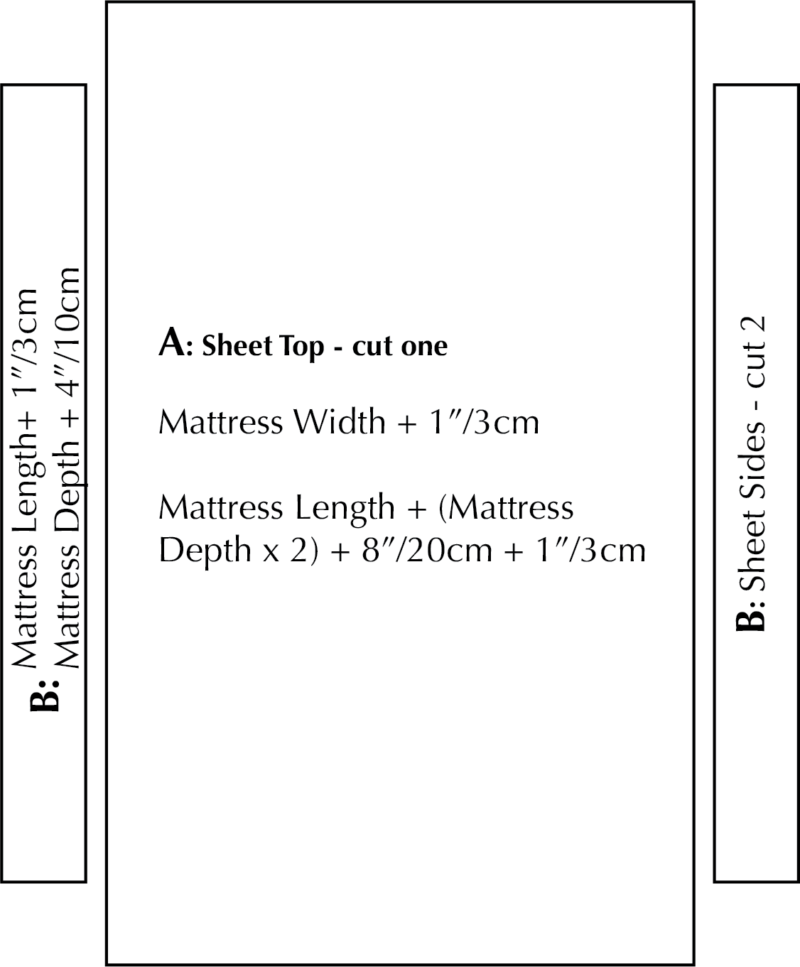
Version A Top Assembly:
You’ll be sewing the big top piece to the narrow side pieces, turning the corner at the short ends, to form the top and bottom of the fitted sheet.

Start by sewing a short end of one Piece B to the long side of Piece A. 1/2″/1.5cm* from the end of the short side of Piece B, sink your needle, and turn the corner of Piece B.

Continue sewing the long edge of Piece B to the long edge of Piece A. 1/2″/1.5cm* before you reach the long end of Piece B, sink your needle, and turn the corner of Piece B so that you can sew down the second short end, forming two corners on either end of your sheet.
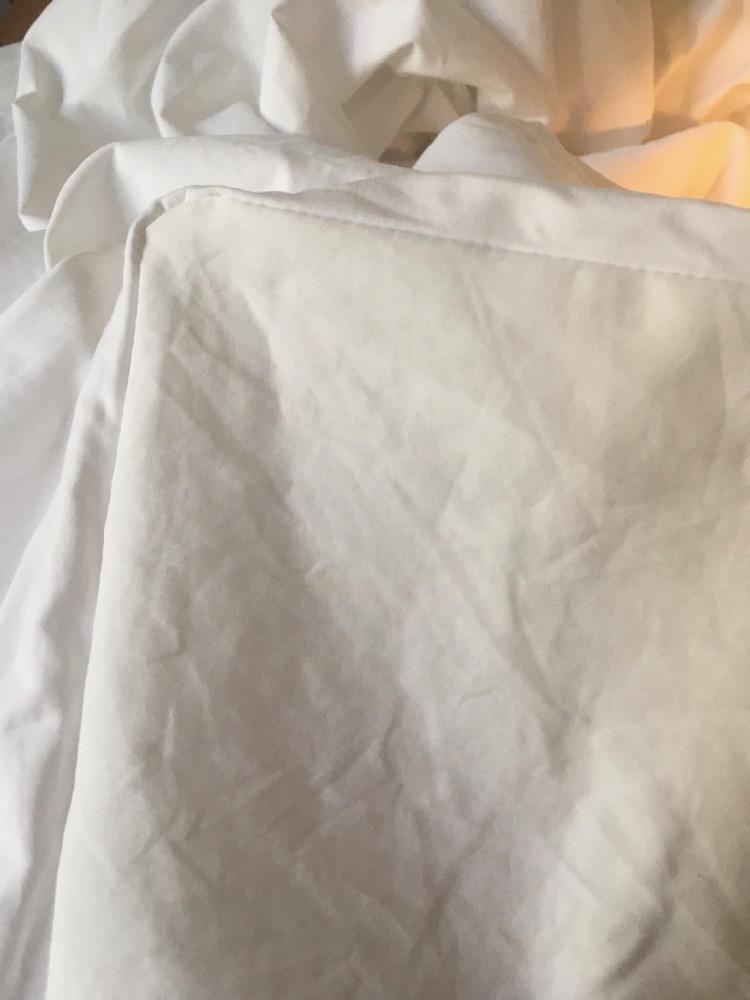
Repeat the same steps to join the second Piece B to the other long edge of Piece A, so you have your assembled sheet which fits neatly over the mattress.
Finish all your seams as desired.
Materials: Version B
This version is made with one moderately long length of fabric that covers the mattress top, two long narrow pieces that cover the sides of the mattress, and two short narrow pieces that cover the ends of the mattress
You’re going to need:
- An old sheet/piece of an old sheet as long as the top of your mattress + 8″/20cm + 1″/3cm (for seam allowance) and as wide as your mattress + 1″/3cm (for seam allowance)
- Scraps of old sheets/fabric enough to make 2 lengths as long as your mattress + 1″/3cm (for seam allowance) and as deep as your mattress + 4″/10cm
- Scraps of old sheets/fabric enough to make 2 lengths as wide as your mattress + 1″/3cm (for seam allowance) and as deep as your mattress + 4″/10cm
- Elastic about 1/2″/1.2cm wide x the circumference of your mattress minus 25%
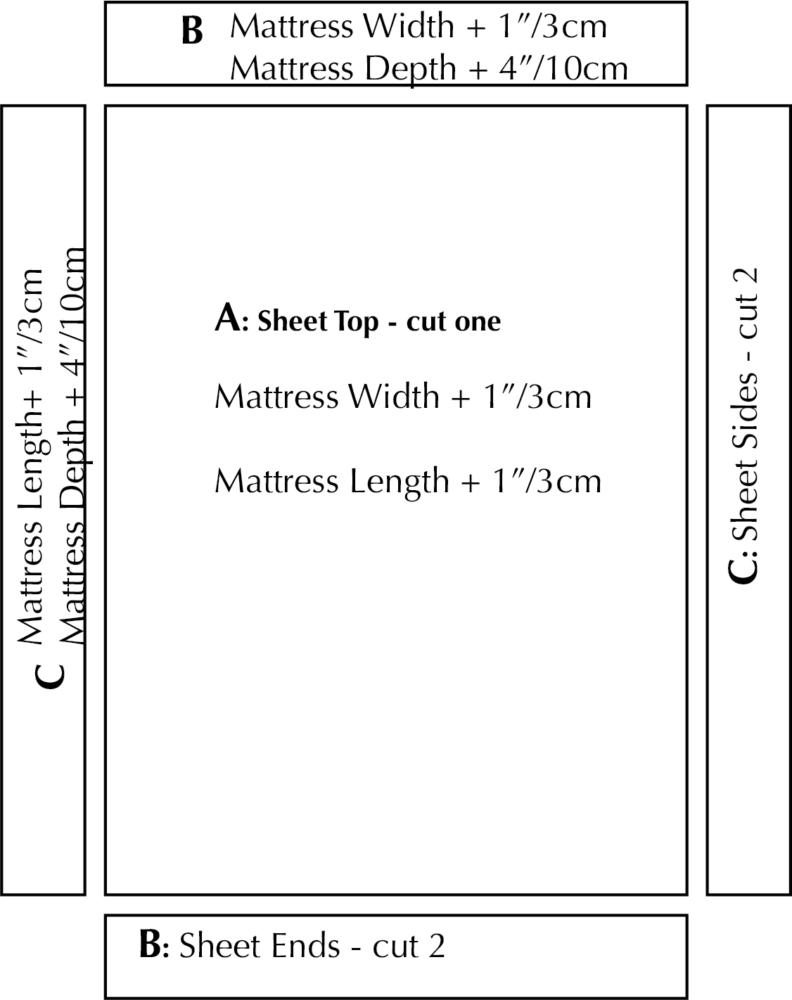
Version B Top Assembly:
Sew Pieces B to Piece A like so:
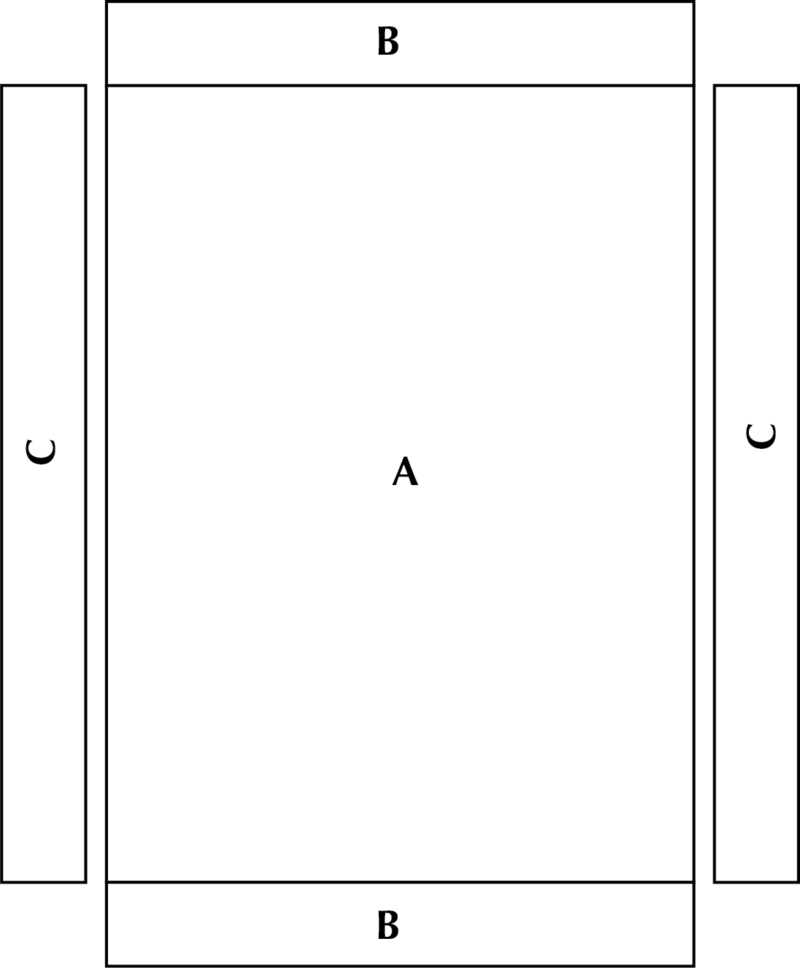
Then assemble the rest of the sheet top exactly as with Version A.
Finish all the seams as desired.
Elastic:
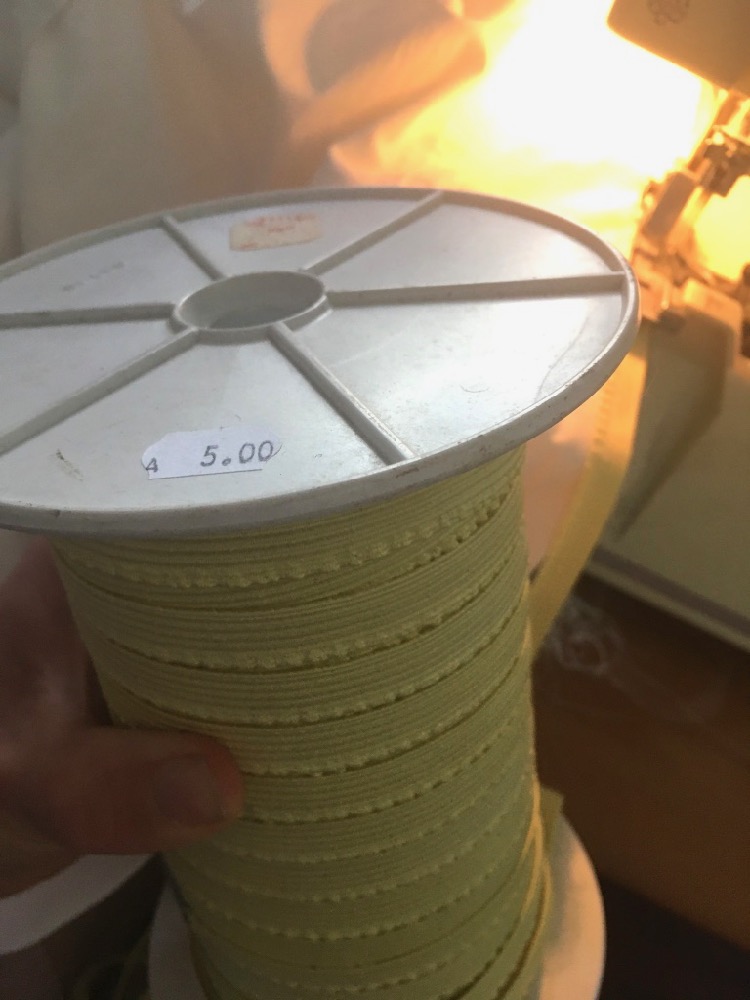
I was super lucky to find an entire roll of suitable elastic at an op shop for only $5.
I don’t measure my elastic as I apply it to my sheet: simply stretch and sew. However, if you really want to measure. a 25% reduction in elastic compared to the circumference should be a good amount.
If you’re doing an exact measure, mark quarters & eights in your elastic, and quarters & eighths in your sheet circumference. Match the quarters and eights before you sew, and then stretch between them as you sew.

If you’re doing what I do, and stretch as you sew, just stretch a moderate amount as you sew around the sheet.
Match the elastic to the WRONG side of the sheet, sew it on, and then fold the elastic in toward the wrong side of the sheet, to cover the elastic and form a neat edge visible from the outside, and then sew again.

Ta da! You are done!
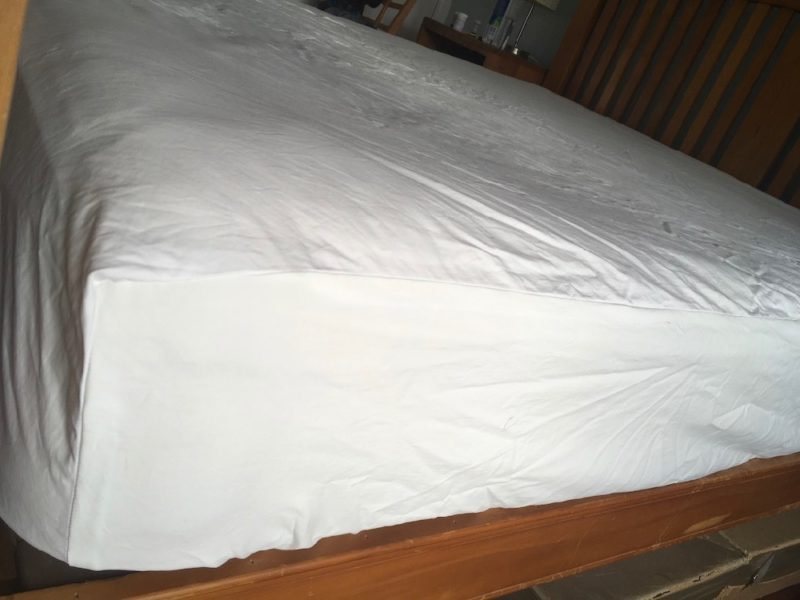
Hopefully I’ll get a few more years use out of these sheets. And then they can get used again, as toiles, and then cleaning clothes. Re-use, re-use, re-use!
May I sleep on them as peacefully as Felicity….

*yep, I know they aren’t the same, but I did the imperial measures for this tutorial with a 1/2″ seam allowance, and the metric with 1.5cm.

This is a great idea. Thanks for sharing.
Dear Leimomi,
Very cool and thank you for the directions!
I darn sheets that have wee tears in them. The darns last well if decently, not perfectly, done. My grandparents and grand-aunts/uncles mended everything, but they lived through the Great Depression and were thrifty as a whole.
Indeed, I have noticed sheet edges, where they are turned for a hem, showing wear in our two-year-old sheets. It’s depressing.
Washing machines differ perhaps between NZ and the US, most likely. I have found that the new washer, which doesn’t have an agitator in it, is far easier on cloth than the old washer was. We haven’t had tears since then. Used to be pretty common, but we had to wait until the old machine wore out before replacing it. 15 years…
Dryers, if you use them, are also very hard on cloth. We have no clothesline, though we dry many clothes in the basement. No room there for sheets.
Thanks again,
Natalie in KY, US
Thank you! I’m really distracted by certain textures, so I’ve struggled to sleep on darned sheets – if I can feel it I can’t fall asleep 🙁
Thanks for all the tips on machines. We’ve had basically the same setup since moving to NZ, so the difference is definitely the quality of sheets, not the machines 🙁
Our washing machine, while a NZ brand (it plays ‘God Defend NZ’ if you press a secret combination of buttons), is exactly the same as a standard US top loader. So not the best on clothes 🙁 We just didn’t have the money for one of the HE machines when we bought it 11 years ago – and I thought the longer lifespan of the machine kind of balanced the wear on clothes, environmental wise. Water usage isn’t such an issue because I have it set up so I can use all the grey water for gardening 🙂
We don’t own a dryer. I use line drying outside, or clothes racks over a dehumidifier in winter. Although line drying in a good Wellington breeze is definitely hard on your clothes! One unexpected Southerly tore a sheet and reduced two antique tableclothes to tatters 🙁
so good to see cloth being used rather than thrown away!
i also felt like i was seeing disproportionate wear on sheets in recent years, unlike the rest of my life. both cotton and linen sheets had tears and thin, worn spots and holes after minimal use and laundering. very frustrating! my old linen sheet set, purchased circa 1994, was used constantly and laundered weekly until we got a bigger bed in perhaps 2005. those sheets are still in perfect condition! i bought a new set of linen sheets for the new bed, which were less smooth, less soft, than the old ones; they never achieved the same softness even after years of wear. they got a little thin at edges, seams, and corners over time, but held up fairly well. they are being used now by a friend. however, the next three sets of linen sheets i purchased, from 2017 or so, have been a mixed bag: the first two sets developed thin spots and holes immediately, after the first couple of washings, and the third set are better, but nowhere near as smooth and lovely as those old linen sheets i still have. cotton sets bought for a guest room also failed promptly. thus i have several sets’ worth of fabric in my linen closet that i have been hoping to do something with. perhaps turning the failed sheets in fitted sheets for the twin beds is the answer!
We are in the USA & have noticed the same thing. It is frustrating, wasteful, and often uncomfortable (claims of high thread count but so rough they are scratchy). Thanks so much for sharing this tutorial.
Great idea. I use old sheets for dress linings, much cheaper than buying new fabric
I bought some cotton sheets when I got married the first time in 1968 and during the 1990s they went into my husbands workshop as they were getting a bit thin and are still there abeit covered in oil etc. BUT no tears. I agree things ain’t what they used to be. Being in hospital last year it was like lying on old fashioned sheets, really thick and smooth. Sometimes charity shops have old fashioned vintage sheets and antique shops have French ones although they are a different size to British ones.
Our washing machines here are front loaders here so I wonder if they are not as tough on textiles as top loaders are, but definitely the quality of bedding and also clothes isn’t what it was. Less quality more profit. What a surprise.
Just looked on eBay lots of vintage sheets on there.
Man, I feel really validated by this post and thread. Like everyone else, I have noticed a significant decline in quality–even better brands like Boden, LLBean, Lands End, and Pottery Barn/Williams Sonoma. While those are still miles away from the cheaper stuff, I wish that I had a better return on the investment. Like Leimomi said, it’s not just monetary investment, but an ecological one, too.
Other ideas are bathroom curtains, hankies, learning toiles for kiddos, and especially forts–a kid can go nuts with large swaths of fabric. White sheets are so easily dyed, too. In a pinch, I have also been known to brew coffee through an old piece of ratty sheet (we ran out of filters, and there was NO way that I was going to start my morning without my brew)
Thank you for these great instructions for the fitted sheet. That’s a great way to reuse.
And, I just happened to stumble on an idea of a “butter muslin”. Mind, blown.
I have been known to cut worn sheets in half and turn them sides-to-middle. But even then they only lasted another year before tearing around the edges where they were worn. Now they’re in the stash waiting to be turned into a variety of other things.
I find it’s the winter sheets that wear out fastest, though – the fluff comes off and then there’s nothing left but a sort of drapey see-through stuff which tears at the drop of a hat.
Pet sheet peeve: only being able to buy sheets in sets with a fitted bottom sheet. I don’t like fitted sheets, I don’t use them, and why can’t I just buy two flat ones? Good thing the ones my parents passed on to me (from the 70s, I suspect, judging from the colour & pattern) are still going strong!
Please can you help.
I have extra large single flat sheets ( or maybe a double sheet) that I want to make into fitted sheets for a standard single bed.
Can you explain how I work out the corners. These flat sheets are probably 30+ years old and never been used. They are a good brand so I would like to get some use out of them.
Unfortunately I’m just too busy to give any advice beyond this tutorial.